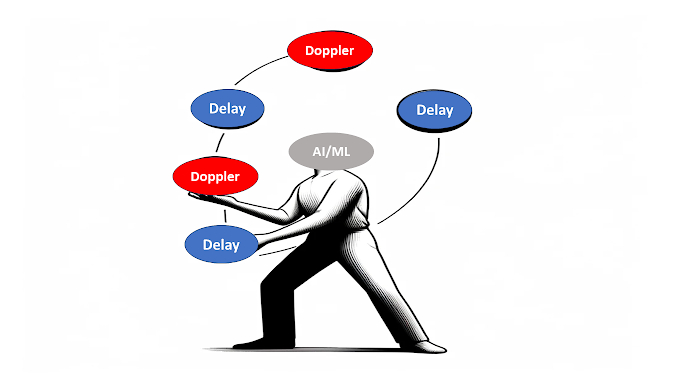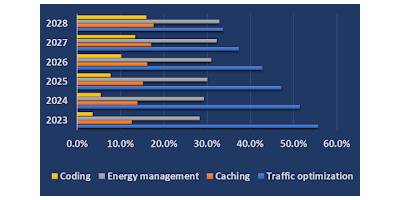5G, Spectrum Continuity, Spectrum Pricing and AGR … and a freewheeling chat with Vikram Tiwathia of COAI
Paul R. Milgrom and Robert B. Wilson are the joint winners for the Nobel Prize for Economics this year for their work “for improvements to auction theory and inventions of new auction formats.” As we understand, the duo is credited with seminal work associated with the efficacy of the auctioning mechanism as a tool for price discovery.
The 5G spectrum auctioning mechanism in India faces numerous questions – especially in the context of the newer learnings that we continue to discover through the pandemic. The pandemic has taught us how pivotal telecommunications is to keep the wheels of our economy and the society as a whole, moving.
Even otherwise, spectrum auction has ceased to be a purely economic policy issue in India. The last three decades have witnessed heated public discourse on how this commodity be put to use.
The dilemma is created by two contrarian forces:
- Spectrum auction as means of revenue maximization for the government, so that the government is directly able to spend it for the public good all by itself; or
- Spectrum auction as a facilitator for making cellular telephony services less expensive, by ensuring that cellular operators have more money to spend on infrastructure and services, and thereby indirectly encourage growth and catalyze the economy all-round.
This is not an easy dilemma to address, and I would not want to prejudice the reader by taking sides myself.
I have been wanting to know what the cellular operator ecosystem in India thinks about spectrum auction. I got my window of opportunity when I recently moderated a panel discussion at FPTN 2020 with Vikram Tiwathia, Deputy Director General of COAI as one of the panelists.
Among the points discussed in the interaction was the question whether 5G is essential for India at all. It may be surprising for some that a question like this should arise in the first place. I believe that given the current state of telco finances and the implications of the spectrum purchase price and other capex; this question is very much germane. It is estimated that a pan-India 5G licence at 100 MHz will cost a telco in the range of $6.5-7 billion!
Surely enough, the panelists, while agreeing that 5G is indeed essential, did not forget to add caveats related to being clear-headed about the intended objectives of such roll-outs.
It is important to realize where the real value addition of 5G is, as Vikram emphasized the difference between 4G and 5G in the following manner “4G is all about apps and connecting people, 5G includes the apps but extends to everything and M2M”.
M2M, what nostalgia! This phrase is under serious threat of receding from public memory. M2M, in my view, can be rightfully called the predecessor of IoT. It is indeed interesting that 5G is bringing M2M back into the spotlight. Vikram is right in emphasizing that real value of 5G is the seamless inclusion of varied user-profiles.
Vikram asserted that “5G is essential because fiber cannot reach every corner”. In the Indian context, it is difficult to argue with that!
Vikram’s most passionate argument, not entirely unexpectedly, was on the issue of spectrum.
He highlighted the tightrope that the Indian telcos have to walk vis-à-vis their global counterparts. “Indian telcos have an average spectrum holding 50 MHz per telco, while globally the average spectrum holding norm is 150 MHz. On the other hand at 12 GB/month, India ranks among the highest per capita consumers of cellular data. How do you reconcile that?”.
His solution to this issue, “Consolidate the unsold spectrum, allow it to be distributed efficiently. The present throughput levels at 11-12 Mbps can then be easily scaled to 50 Mbps with the existing network infrastructure”.
This was getting interesting, I had to take this discussion outside the event. I requested Vikram to elaborate on the spectrum consolidation aspect.
“Telecommunications service providers (TSP) will need contiguous spectrum bands. In the forthcoming auction the bands will be 700, 800, 900, 1800, 2100, 2300 and 2600 MHz, for which the TSPs will bid. When allocations are made these should in bands contiguous to the current holdings of the TSPs. This will enable bigger carriers hence better throughput. While Carrier Aggregation (CA) is also an option however, if possible contiguous bands will help.”, he asserted. Indeed, inter-band CA is challenging from RF planning perspective. Alas, given the increasing shrinking number of incumbent TSPs, ensuring contiguity of spectrum may not be as challenging as earlier!
His most radical thought was on the issue of spectrum pricing.
“Spectrum should not be looked at merely as a revenue churner”, is his central argument. This takes us back to the dilemma I mentioned earlier in the article. We have heard this before and it is easy to see that this thought goes against the grain of the principle behind auctioning the spectrum and setting a base price. Successive governments have looked upon this exercise as a major revenue generating exercise.
Vikram does not dismiss the market-driven price discovery. He advocates making it more contemporary, “There is a need to review the current pricing methodology, which considers previous auctions as the reference for the next auction. Since no two auctions are similar, as the technology landscape and market conditions evolve dynamically. Relying on previous bid price is incorrect approach. The regulator must initiate a consultation to overhaul the base price calculation methodology and focus should be on a market discovered price considering changing industry landscape. In the last few months of the pandemic, the need for a robust Digital network and good broadband has been amply understood by all. It is an opportune time for the Government to review the spectrum pricing mechanism to incentivize investments as well as utilize this opportunity to give the telecom sector a boost with reduction in spectrum pricing to a nominal one.”
It is a compelling argument when looked at from the TSP point-of-view. Accepting it, even in parts, will necessitate a major rethink at the policy level, especially with the government’s own revenues under stress due to the pandemic.
Vikram is happy however with the National Digital Communications Policy (NDCP-2018) in the context of addressing the spectrum requirements in the upper bands, including the millimeter wave spectrum for 5G. NDCP talks about “recognizing mid-band spectrum, particularly the 3 GHz to 43GHz range, as central to India’s strategy for Next-Generation Networks”. Vikram has a request however, “The government should implement the NDCP provisions at an early date.”
I could not resist asking him about the hot button issue of AGR. Pat came the response “The Government must review the present definition articulate a clear and unambiguous AGR definition going forward.”
Once again, it is difficult to argue with the clear and unambiguous part of his response. While a review of the present definition may be in order, it is difficult to put a finger on what shape the AGR (or any alternative mechanism) may yield post this review. Let us agree for now that the issue of AGR needs a separate article of its own.
Thank you Vikram for expressing your thoughts in a clear and forthright manner. You have given a lot of food for thought for all of us.
|
RELATED BLOGS

AI, RAN and Delay-Doppler – How Cohere does it

AI and its applications in the RAN

